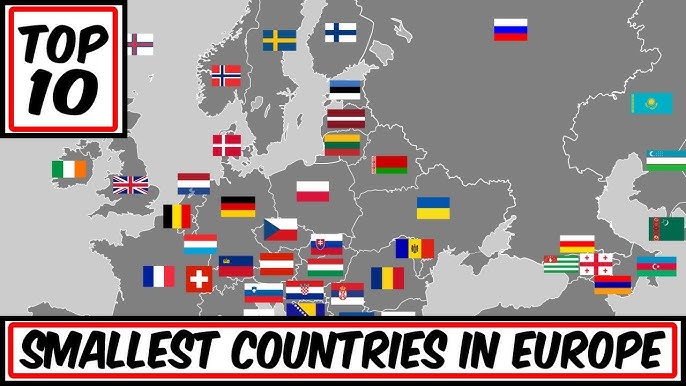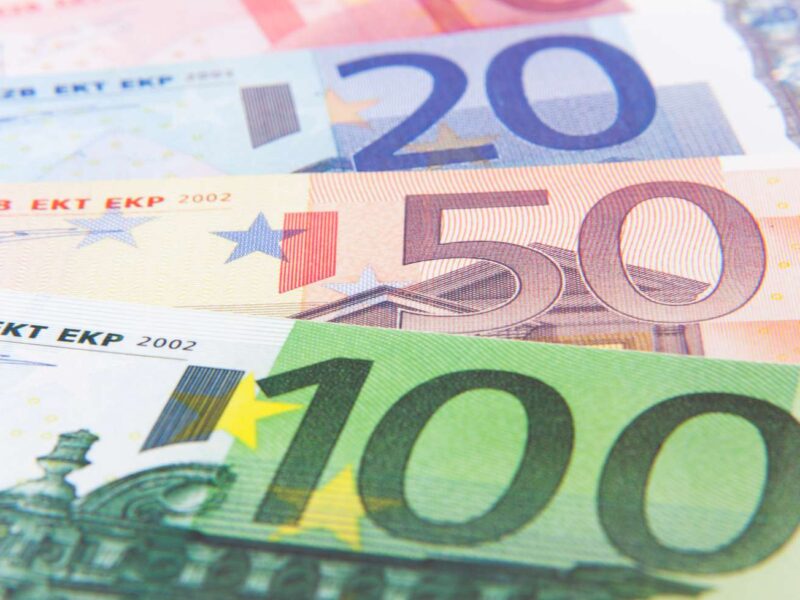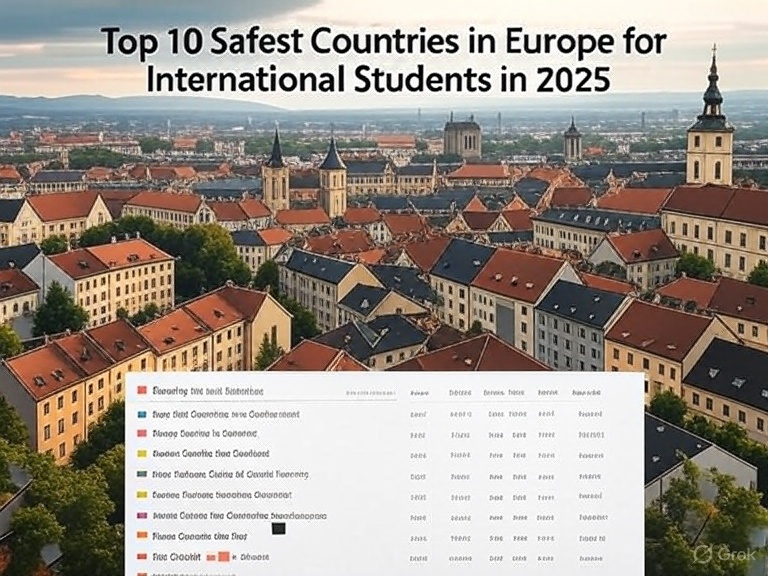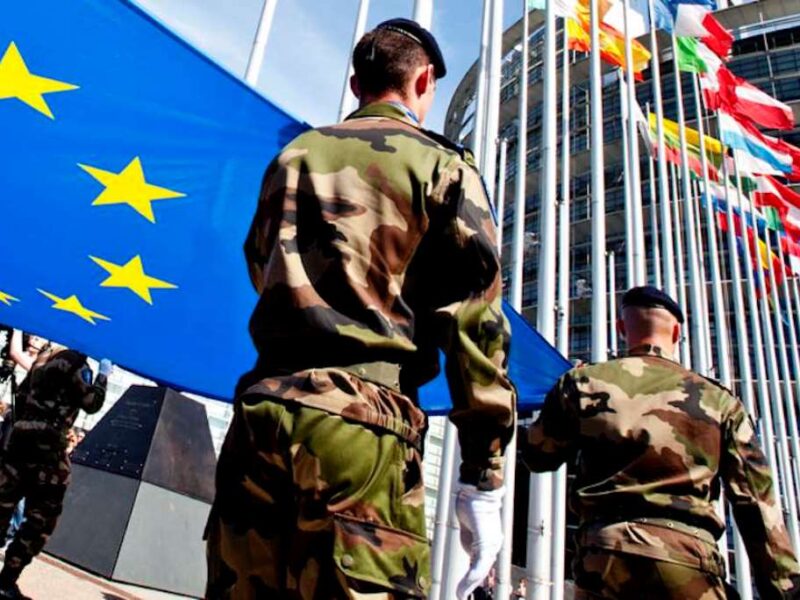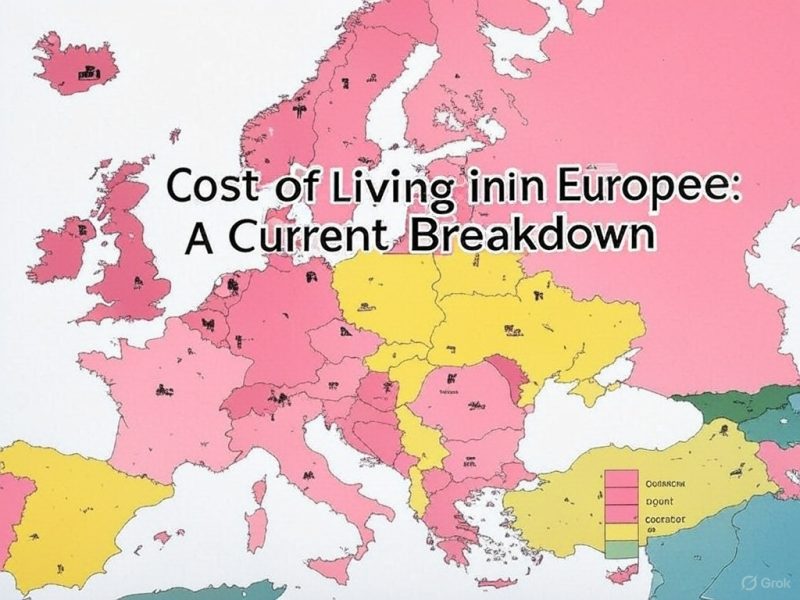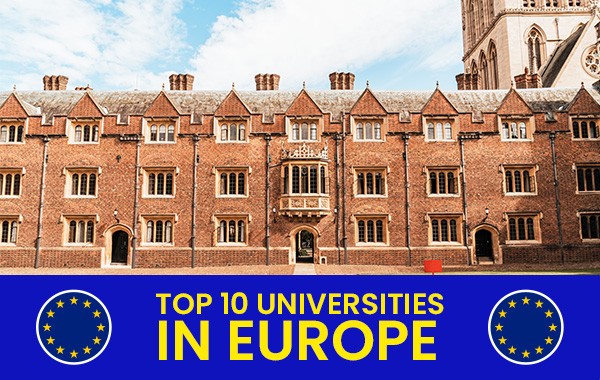Have you ever dreamed of exploring a country so tiny you could walk its borders in an afternoon? Europe, with its patchwork of histories and cultures, is home to some of the world’s most fascinating micro-nations. If you’re into geography trivia, travel bucket lists, or just curious about the smallest countries in Europe, you’re in for a treat. These pint-sized powerhouses pack big personalities, from ancient city-states to glamorous tax havens. In this post, we’ll countdown the top 10 smallest countries in Europe by land area, sharing fun facts, a bit of history, and why each one deserves a spot on your radar. Whether you’re planning a quirky road trip or just armchair adventuring, let’s shrink down and explore these European gems.
Why Focus on Europe’s Tiniest Nations?
Before we jump into the list, a quick note on what makes these small countries in Europe so special. Europe isn’t just about sprawling giants like Russia or France or even the largest European countries—it’s dotted with sovereign states that punch way above their weight. Many are landlocked enclaves or islands, shaped by centuries of politics, religion, and sheer stubborn independence. From the Vatican City’s spiritual clout to Monaco’s yacht-filled glamour, size doesn’t limit their global influence. Plus, visiting them is a travel hack: you can notch multiple countries on one trip without jet lag. Ready? We’ll start with the absolute smallest and work our way up.
Smallest Countries in Europe (at a glance)
| Rank | Country | Area (km²) | Capital | Population (approx.) | EU Member | Schengen | Currency |
|---|---|---|---|---|---|---|---|
| 1 | Vatican City | 0.49 | Vatican City | ~800 | No | No (open border with Italy) | Euro (EUR) |
| 2 | Monaco | 2.02 | Monaco | ~39,000 | No | No (open border with France) | Euro (EUR) |
| 3 | San Marino | 61 | San Marino | ~34,000 | No | No (open border with Italy) | Euro (EUR) |
| 4 | Liechtenstein | 160 | Vaduz | ~39,000 | No | Yes | Swiss franc (CHF) |
| 5 | Malta | 316 | Valletta | ~540,000 | Yes | Yes | Euro (EUR) |
| 6 | Andorra | 468 | Andorra la Vella | ~80,000 | No | No | Euro (EUR) |
| 7 | Luxembourg | 2,586 | Luxembourg City | ~660,000 | Yes | Yes | Euro (EUR) |
| 8 | Cyprus | 9,251 | Nicosia | ~1.2 million | Yes | No | Euro (EUR) |
| 9 | Kosovo | 10,887 | Pristina | ~1.8 million | No | No | Euro (EUR) |
| 10 | Montenegro | 13,812 | Podgorica | ~620,000 | No (EU candidate) | No | Euro (EUR) |
10. Montenegro – 13,812 Square Kilometers
Kicking off our list of the smallest countries in Europe is Montenegro, a Balkan beauty that feels like a hidden Adriatic secret. At just over 13,800 square kilometers, it’s about the size of Connecticut, but oh boy, does it deliver drama. Picture jagged mountains plunging into turquoise bays, medieval fortresses clinging to cliffs, and beaches that rival the Caribbean.
Montenegro’s story is one of resilience. It declared independence from Serbia in 2006 after a nail-biter referendum, and since then, it’s blossomed into a hotspot for eco-tourism. Head to Kotor, a UNESCO-listed fjord town where you can hike to ancient walls for panoramic views. Or unwind in Budva’s lively Riviera, sipping rakija (a potent plum brandy) at sunset. Fun fact: The name means “Black Mountain,” thanks to those dark, forested peaks. If you’re chasing adventure on a small scale, Montenegro’s hiking trails and boat tours are unbeatable. It’s proof that even among Europe’s tiniest nations, there’s room for epic landscapes.
9. Kosovo – 10,887 Square Kilometers
Next up, Kosovo, clocking in at around 10,900 square kilometers. This young nation, independent since 2008, is a mosaic of Ottoman mosques, Serbian Orthodox monasteries, and buzzing Pristina cafes. It’s roughly the size of Delaware, but its history feels centuries deep—think ancient Illyrian roots tangled with Balkan conflicts.
Despite its size, Kosovo’s cultural vibe is electric. Wander the Newborn Monument in Pristina, a yellow-box art installation celebrating independence, or hike in the Rugova Canyon for wildflower-strewn trails. Foodies, rejoice: Try flija, a layered crepe baked over an open fire, paired with local qofte (meatballs). Kosovo’s wine scene is emerging too, with vineyards in the Rahovec region producing crisp whites. As one of the smallest countries in Europe, it’s often overlooked, but that’s changing—it’s a resilient underdog story that reminds us travel is about connection, not checklists.
8. Cyprus – 9,251 Square Kilometers
Sailing into eighth place is Cyprus, the sun-soaked island nation spanning about 9,250 square kilometers. Straddling Europe and the Middle East, it’s a cultural crossroads where Greek tavernas meet Turkish mezes. Think of it as Rhode Island with ancient ruins and endless beaches.
Cyprus has been divided since 1974, with the Greek south and Turkish north each claiming their slice, but that hasn’t dimmed its allure. Dive into Paphos’ archaeological park, home to mosaics from Roman times, or snorkel in the Blue Lagoon’s crystal waters. Halloumi cheese lovers, this is your paradise—grilled and squeaky, it’s the national dish. A quirky tidbit: Cyprus is home to the world’s oldest wine, Commandaria, dating back 5,000 years. For those hunting tiny European nations with big flavors, Cyprus blends history, myth (hello, Aphrodite’s birthplace), and relaxation in one compact package.
7. Luxembourg – 2,586 Square Kilometers
Shrinking down to Luxembourg at 2,586 square kilometers, we’re entering the realm of grand duchies and fairy-tale castles. This Benelux beauty is smaller than Rhode Island but boasts the world’s highest GDP per capita—thanks to its finance hub status.
Don’t let the banker reputation fool you; Luxembourg is a hiker’s dream. The Mullerthal Trail winds through “Little Switzerland” rock formations, while Vianden Castle (yes, the one that inspired Disney) overlooks vine-covered valleys. Savor a plate of Judd mat Gaardebounen—smoked pork with beans—in a cozy brasserie. Fun fact: It’s one of the few remaining monarchies in Europe, ruled by Grand Duke Henri. As a small country in Europe, Luxembourg proves you can be mighty without being massive, blending old-world charm with modern efficiency.
6. Andorra – 468 Square Kilometers
Halfway through our top 10 smallest countries in Europe, we hit Andorra at a mere 468 square kilometers. Nestled in the Pyrenees between France and Spain, it’s a duty-free shopper’s haven and a skier’s slice of heaven—think New Jersey’s area but with alpine peaks.
Andorra’s co-princes (the French president and a Spanish bishop) make for a quirky governance setup dating back to 1278. La Vella, the capital, buzzes with tax-free boutiques, but the real draw is the outdoors: Hike to mountain lakes or hit the Grandvalira slopes in winter. Try escudella, a hearty stew, at a mountain refuge. A neat nugget: Despite no airport, it’s accessible by scenic drives from Barcelona or Toulouse. For budget travelers eyeing Europe’s tiniest nations, Andorra’s shopping sprees and spa towns like Caldea offer luxury without the price tag.
5. Malta – 316 Square Kilometers
Now we’re talking micro-scale with Malta, covering just 316 square kilometers across three islands. This Mediterranean marvel is like Delaware dropped into azure waters, famed for honey-hued limestone and Knights of St. John lore.
Malta’s history reads like a blockbuster: Phoenicians, Romans, Arabs, and crusaders all left their mark. Explore Valletta’s baroque streets (a UNESCO site) or dive the Blue Hole in Gozo. Rabbit stew (fenek) is the island classic—don’t knock it till you try it. Fun fact: Malta’s the only EU country where English is an official language alongside Maltese, a Semitic tongue. As one of the smallest countries in Europe, it’s a diver’s and history buff’s delight, with over 300 shipwrecks and fortresses galore. Pro tip: Rent a boat to hop between islands for that ultimate tiny-nation immersion.
4. Liechtenstein – 160 Square Kilometers
Edging into true enclave territory, Liechtenstein spans 160 square kilometers—smaller than Washington, D.C. Tucked between Switzerland and Austria along the Rhine, it’s a postage-stamp principality ruled by the von und zu Liechtenstein family since 1719.
Don’t expect beaches here; it’s all about pristine Alps and medieval vibes. Vaduz Castle looms over the capital (still privately owned—no tours inside), but you can tour the postage stamp museum (yes, really— they’re collector’s gold). Hike the Three Castles Path or ski Malbun in winter. Sample a Käsknöpfle (cheese dumplings) with local Riesling. A whimsical aside: Liechtenstein has no army, just a ceremonial guard, and it’s one of the world’s richest per capita. For fans of Europe’s smallest countries, it’s a serene escape where you can summit peaks and spot ibex in a day.
3. San Marino – 61 Square Kilometers
Bronze goes to San Marino, an Italian-enveloped republic of 61 square kilometers. Perched on Mount Titano like a storybook fiefdom, it’s the world’s oldest surviving sovereign state, claiming independence since 301 AD.
San Marino’s three towers—Guaita, Cesta, and Montale—guard its hilltop capital, offering views that stretch to the Adriatic. Stroll cobblestone streets lined with crossbow shops (a nod to medieval defense) and gelato stands. The national dish? Torta Tre Monti, a chocolate-hazelnut cake fit for republics. Fun fact: It stayed neutral in both World Wars, sheltering refugees. As a tiny European nation, San Marino’s passport is a collector’s item—visa-free to 170 countries. It’s perfect for a day trip from Rimini, blending history with that rare “I conquered a country” feeling.
2. Monaco – 2 Square Kilometers
Silver medal for Monaco, the glitziest speck at 2 square kilometers. This Riviera riviera is smaller than New York’s Central Park but hosts Formula 1 races, mega-yachts, and more millionaires per square foot than anywhere else.
Monaco’s allure? Pure opulence. Stroll the Monte Carlo Casino (inspired James Bond), or ogle supercars on the streets. The Prince’s Palace guards 700 years of Grimaldi rule—watch the changing of the guard at 11:55 AM. Savor bouillabaisse in a harborside bistro. Tidbit: Over 30% of residents are billionaires, and there’s no income tax—hence the expat crowd. Among the smallest countries in Europe, Monaco’s a playground for the elite, but you can visit on a budget: Hit the free Oceanographic Museum or hike to the exotic gardens. It’s where fairy tales meet Ferraris.
1. Vatican City – 0.44 Square Kilometers
And the crown jewel of our smallest countries in Europe? Vatican City, at a mind-boggling 0.44 square kilometers—about 110 acres. Enclaved within Rome, it’s the spiritual heart of 1.3 billion Catholics, ruled by the Pope as an absolute monarchy.
Step through St. Peter’s Square for that jaw-drop moment: Bernini’s colonnades embrace pilgrims like open arms. Inside the Basilica, Michelangelo’s Pietà and dome await. The Sistine Chapel’s ceiling? A Renaissance riot of color. Don’t miss the Vatican Gardens’ tours for a serene contrast. Grab a panini near the walls—simple, but divine after all that art. Fun fact: It’s the smallest country globally, with its own euro coins, post office, and even a pharmacy. For travelers seeking Europe’s tiniest nations, Vatican City is profound: a universe of faith in a city block.
Honorable Mentions and Travel Tips for Tiny Europe
While we’ve covered the top 10, shoutouts to micro-entities like Sealand (a WWII platform off England) or the Sovereign Military Order of Malta, though they’re not fully sovereign states. Planning a tour of these small countries in Europe? Start with a Eurail pass for seamless hops—San Marino from Italy, Andorra from Spain. Best time? Summer for beaches, winter for Alps. Pack light: These spots reward curiosity over luggage. Budget-wise, Monaco’s pricey, but Malta and Montenegro offer value.
Visiting these diminutive destinations isn’t just about ticking boxes—it’s about marveling at human ingenuity. How do you sustain sovereignty in a handkerchief of land? Through culture, diplomacy, and a dash of defiance. Whether you’re a geography geek or a wanderlust warrior, Europe’s smallest countries remind us that big adventures come in small packages.
What’s Your Favorite Small Country in Europe?
Which of these smallest countries in Europe calls to you? The Vatican’s serenity, Monaco’s sparkle, or Montenegro’s wild coasts? Drop a comment below—I’d love to hear your stories or dream itineraries. If this sparked your travel itch, check out our guides on hidden European gems or budget backpacking. Safe travels, and remember: Sometimes, the best journeys are the shortest ones.
